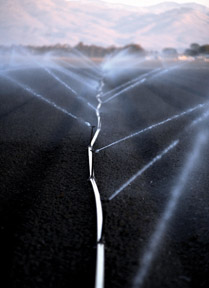The two primary reservoirs for San Benito County residents are all but bone dry these days, but a local water district official did note that the area’s ample groundwater basin would last for years before reaching dangerously low levels.
San Benito County and much of California have been in drought conditions for the past three years running. In 2013, Hollister recorded its driest year on record with just more than four inches of precipitation the entire calendar year, with averages usually ranging from 11 to 13 inches.
It has meant particularly tough times for farmers and ranchers who rely on local groundwater and federal water from the San Felipe Project storing its supplies at San Luis Reservoir. Many farmers turned to well supplies that are harder to extract, while federal allotments have been reduced on a routine basis.
“Hernandez and Paicines (reservoirs) are empty,” said Jeff Cattaneo, manager of the San Benito County Water District, who pointed to the “dead pools” left in the reservoirs. “You can’t get the water out.”
Each year, the water district conducts releases of some reservoir water – down the San Benito River toward Hollister – and this time around it took about two weeks to percolate into the ground as opposed to the usual six to eight weeks, Cattaneo said.
Right now, the groundwater basin in some areas has experienced declines of about 20 feet compared with the usual amounts, he said. Historic lows are about 160 feet lower than the basin’s standing last year, he said.
“Right now the groundwater basin is not in too bad a condition,” Cattaneo said.
Still, that doesn’t entirely offset the day-to-day problems experienced in local agriculture. As noted by Agriculture Commissioner Ron Ross, cattle ranchers are going through especially hard times, often having to either limit their numbers or buy expensive hay as feed.










